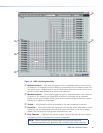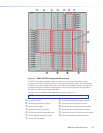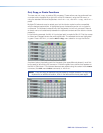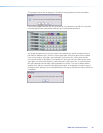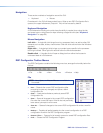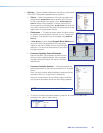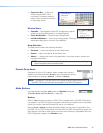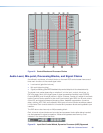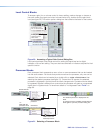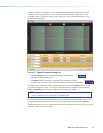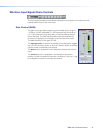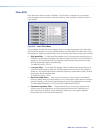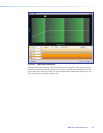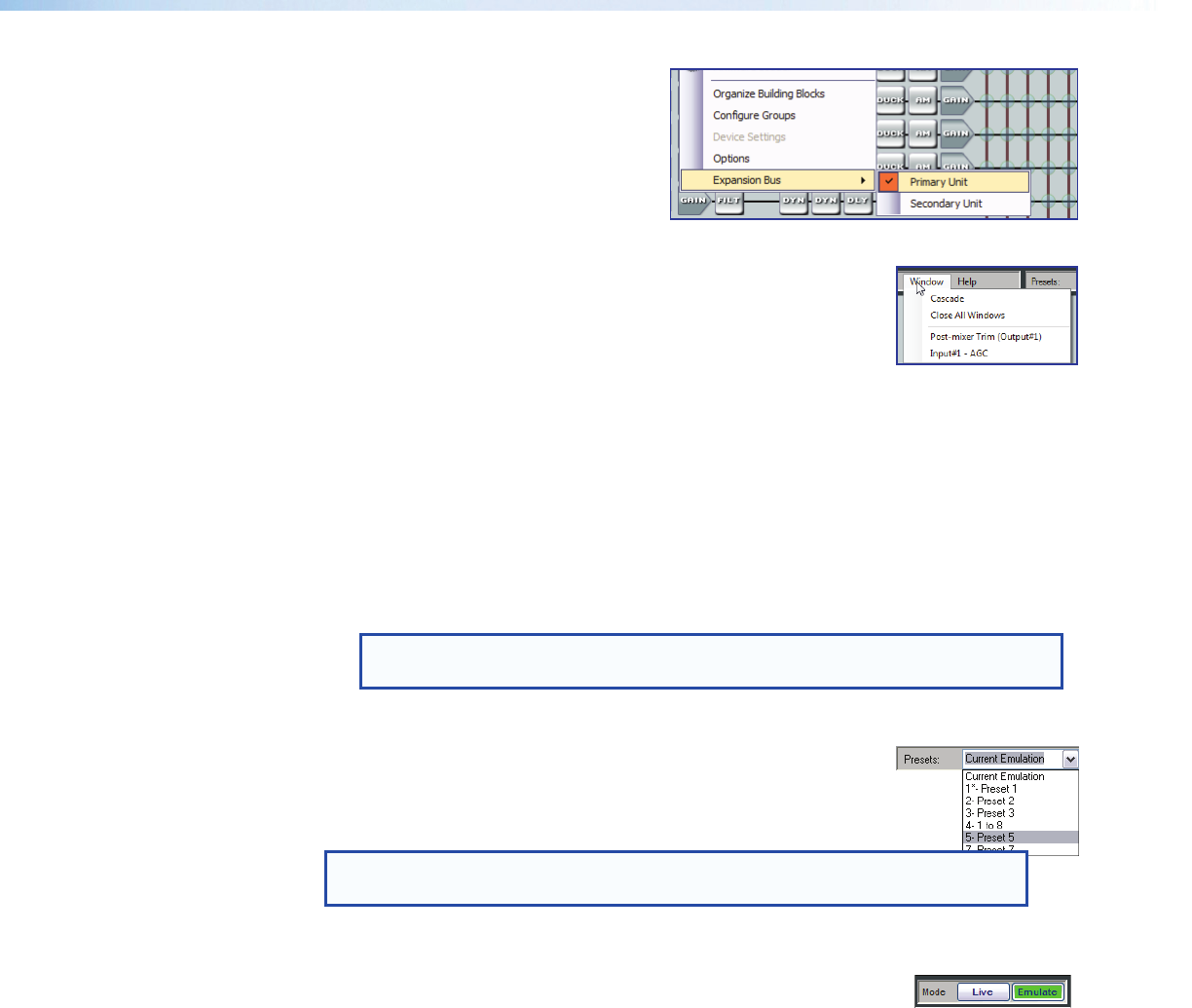
• Expansion Bus — Active only
when a second DMP128 is
connected. Provides a means to
select control of either the primary
or secondary device.
Window Menu
• Cascade — Rearranges all open DSP Configurator program
screens, including dialog boxes, in a cascading array.
• Close All Windows — Closes all open dialog boxes.
• Individual Windows — Lists all open dialog boxes. Clicking on the name brings the
associated dialog box to the front of the desktop.
Help Selection
The Help menu contains the following elements:
• Contents — opens the Help file at the Contents tab.
• Search — opens the Help file at the Search tab.
• About... — displays the name of the application, the current version number, and
copyright information.
NOTE: Help can be activated via the F1 key from any main screen or dialog
(which accesses context sensitive Help).
presets Drop-down
Displays a list of up to 32 presets. Select a preset from the list to
display it and either activate it (Recall), abort the selection without
either recalling or deleting it (Cancel), or delete it (Delete).
NOTE: An asterisk in the drop-down list indicates a partial preset exists only in
the DMP128 and has not been downloaded to the DSPConfigurator.
Mode Buttons
Provides selection between Live mode and Emulate mode (see
“Emulate Mode and Live Mode” on page89).
Backup
When in Live mode (connected to a DMP128), if presets exist in the DMP128 that are
not present in the DSPConfigurator program (indicated by an asterisk next to the preset
name), the function halts and prompts the user to run a backup.
Backup (File > Backup) transfers all partial presets plus the current configuration from
the DMP128 to a DSP configuration (.edc) file within the DSP Configurator program and
then displays a prompt to save the file to the hard drive. Backup is unavailable when the
DSPConfigurator program is in Emulate mode.
DMP128 • Software Control 27



